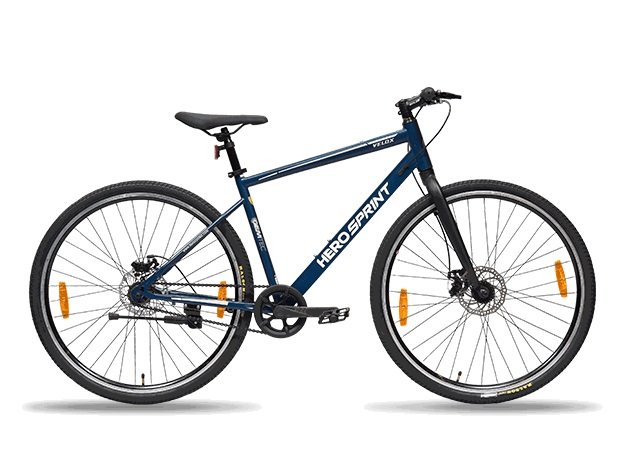Why Urban Cycling is the Future of City Commuting
As cities around the world grapple with the challenges of traffic congestion, pollution, and the need for sustainable transportation, urban cycling has emerged as a compelling solution. The bicycle, once seen as a simple means of recreation, is now gaining prominence as a viable and efficient mode of transport for city dwellers. The rise of cycling infrastructure, bike-sharing programs, and the growing awareness of environmental and health benefits have propelled urban cycling into the spotlight. This article delves into the reasons why urban cycling is becoming the future of city commuting and how it offers multiple benefits for individuals, cities, and the planet.
The Need for Sustainable Transportation
One of the key factors driving the growth of urban cycling is the urgent need for sustainable transportation. Modern cities are struggling with increasing levels of air pollution and carbon emissions, primarily caused by the overwhelming number of motor vehicles on the roads. In densely populated urban areas, where public transportation options are often overcrowded or inefficient, bicycles present a cleaner, greener alternative.
Unlike cars, motorcycles, or even public buses, urban bicycles produce zero emissions, making them an eco-friendly option for commuting. According to a 2015 study by the European Cyclists’ Federation, a typical bicycle produces less than 5% of the emissions associated with cars. As cities become more committed to reducing their carbon footprints, promoting cycling as a primary means of transportation can significantly contribute to achieving sustainability goals.
Moreover, the production of bicycles requires far fewer resources and energy than that of cars, further reducing their environmental impact. From the extraction of raw materials to the manufacturing process, bicycles leave a much smaller ecological footprint. Cities that prioritize cycling can take important steps toward reducing greenhouse gases and slowing the progression of climate change.
Addressing Urban Traffic Congestion
Another pressing issue facing modern cities is traffic congestion. As urban populations continue to grow, roads become increasingly crowded with vehicles, resulting in longer commutes, higher fuel consumption, and wasted time for drivers.
Urban cycling offers an effective solution to this problem. Bicycles take up far less space than cars, meaning that more cyclists can fit on city streets without contributing to congestion. In fact, in many cities, cycling is often the fastest mode of transport during peak hours, as cyclists can easily navigate through traffic and avoid gridlock. Cities that encourage cycling by developing dedicated bike lanes and car-free zones can significantly reduce traffic congestion while promoting a healthier, more efficient way of commuting.
As more people embrace urban bicycles, city planners are also rethinking how streets are designed. The concept of “complete streets” – where roads are built not just for cars, but also for cyclists and pedestrians – is gaining momentum. This approach fosters safer environments for cyclists while reducing the reliance on automobiles, helping to alleviate traffic congestion in the process.
Health Benefits of Urban Cycling
In addition to the environmental and logistical advantages, urban cycling offers significant health benefits for commuters. Regular physical activity is essential for maintaining good health, and cycling provides a low-impact, cardiovascular workout that strengthens muscles, improves heart function, and promotes weight loss. For city dwellers who may find it difficult to incorporate exercise into their busy lives, commuting by bicycle offers a practical way to stay active while getting to and from work.
Studies have shown that even moderate cycling can reduce the risk of chronic diseases such as obesity, diabetes, and heart disease. The World Health Organization recommends at least 150 minutes of moderate-intensity exercise per week, and cycling can easily help individuals meet this target. Urban cycling also boosts mental health by reducing stress and improving mood, as physical activity releases endorphins, which are natural mood enhancers.
Moreover, cycling helps commuters avoid the sedentary lifestyle that comes with sitting in cars or on public transportation for extended periods. Regular cyclists report feeling more energized, focused, and productive throughout the day. For city residents who spend long hours in front of a computer, cycling offers a refreshing way to incorporate movement and improve overall well-being.
The Economic Benefits of Urban Cycling
Urban cycling is not only beneficial for individual health and the environment but also offers economic advantages. For one, bicycles are far more affordable to purchase and maintain compared to cars. The cost of gasoline, car maintenance, insurance, and parking fees can add up significantly for urban drivers. In contrast, urban bicycles require minimal maintenance, and there are no fuel costs involved. For those looking to save money, cycling is a cost-effective alternative to car ownership or frequent use of public transportation.
In addition, cycling can boost local economies by increasing foot traffic in city centres. Studies have shown that cyclists are more likely to stop at local businesses, cafes, and markets, contributing to the vibrancy of urban areas. Cities that invest in cycling infrastructure, such as bike lanes and parking facilities, can attract more people to their downtown areas, stimulating economic growth while reducing reliance on cars.
From a broader perspective, cycling also reduces the strain on public infrastructure. The cost of building and maintaining roads for automobiles is substantially higher than that of cycling lanes. By promoting cycling, cities can allocate resources more efficiently and reduce the wear and tear on roadways caused by heavy vehicles.
Accessibility and Inclusivity
Cycling is one of the most accessible forms of transportation. Unlike owning a car, which can be prohibitively expensive for many, bicycles are affordable and available to people of all income levels. As cities work toward becoming more inclusive, urban bicycles provide an equitable solution for transportation, offering mobility to a broader range of individuals.
Furthermore, the rise of bike-sharing programs has made urban cycling even more accessible. These programs, available in cities worldwide, allow residents and tourists to rent bicycles for short periods, making it easier for people to cycle even if they don’t own a bike. For those who don’t have space to store a bicycle at home or are only occasional cyclists, bike-sharing programs are a convenient option that encourages more people to take up cycling.
Urban Cycling and Infrastructure Development
The rise of urban cycling has led to a growing demand for cycling infrastructure. Cities around the world are investing in bike lanes, bike-sharing systems, and bicycle parking facilities to support the increasing number of cyclists. Cities such as Copenhagen, Amsterdam, and Portland have long been known for their cycling-friendly infrastructure, but more cities are following suit.
Dedicated cycling lanes, separate from car traffic, make cycling safer and more appealing to a wider range of people. This infrastructure not only reduces the risk of accidents but also encourages new cyclists to take to the streets. Moreover, bike-friendly traffic signals, signage, and parking areas contribute to creating a cyclist-friendly environment.
Urban cycling is not just a trend; it’s the future of city commuting. As cities continue to grow and face the challenges of pollution, congestion, and climate change, the urban bicycle offers a solution that is eco-friendly, cost-effective, and accessible to all. By investing in cycling infrastructure, promoting bike-sharing programs, and encouraging a culture of cycling, cities can create healthier, more sustainable environments for their residents.
With its multitude of benefits—ranging from improved public health to reduced environmental impact—urban cycling is poised to become the dominant mode of transportation in the cities of tomorrow. Whether you’re a daily commuter, a weekend rider, or a casual cyclist, the future is clear: the bicycle is here to stay.






